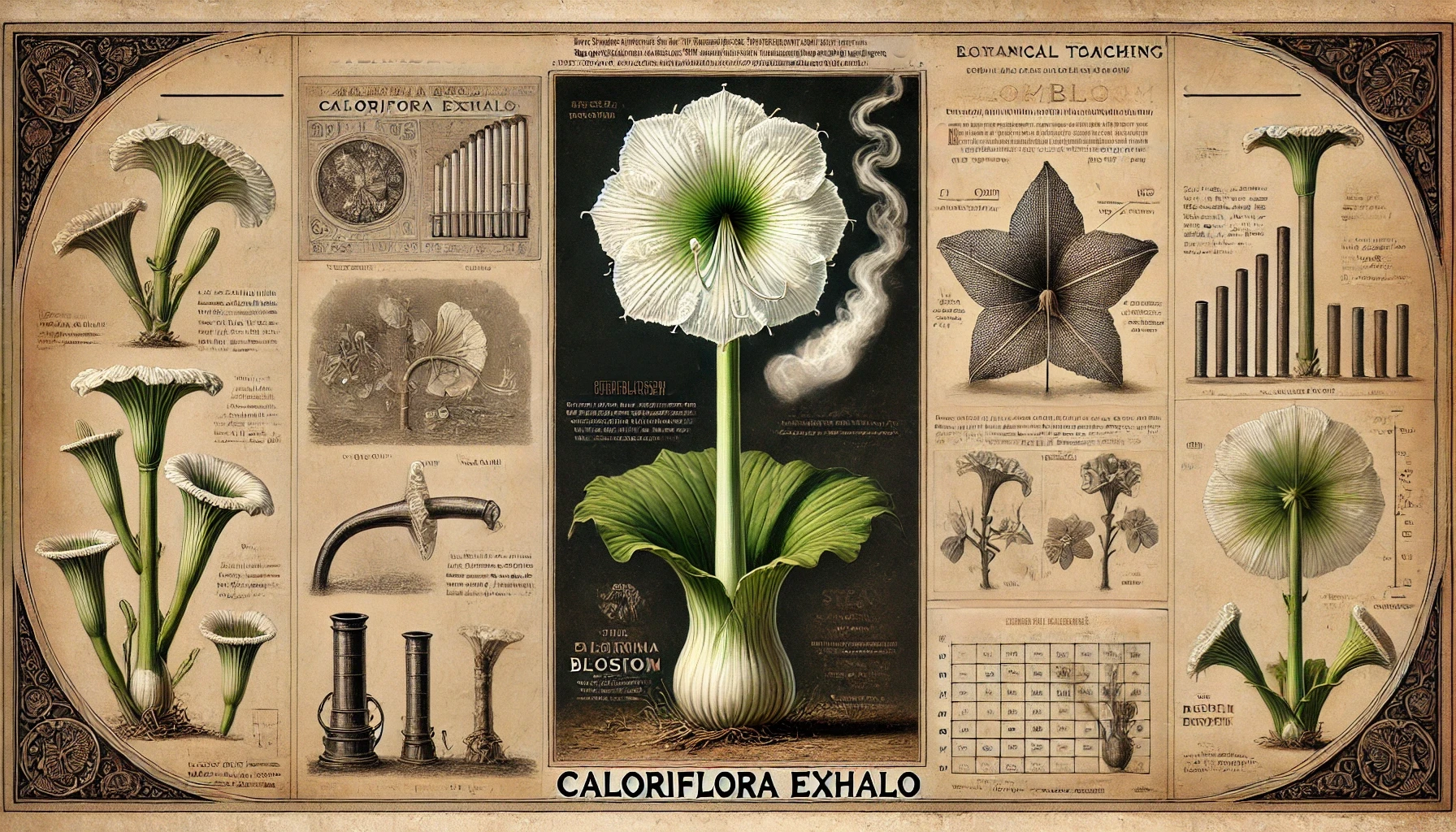Visual Description
The Steamblossom stands like a natural chimney, with a thick, bulbous base and a tall, upright stem that resembles a vent pipe. Its bloom—a wide, radiant white flower—unfolds at the top like a pale funnel. From its open heart, a continuous stream of warm, misty vapor rises throughout the day. The vapor emits in gentle, rhythmic pulses, and the plant is often accompanied by a low whistle or hum—a soft, musical signature easily heard near geysers or geothermal ridges.Habitat and Growth
Steamblossoms grow exclusively in geothermal fields, particularly near hot springs, geysers, and sulfur vents where underground pressure cycles keep the root bulb constantly warm and hydrated. The plant draws heat from these flows and converts it into regulated vapor release. Reproduction occurs through tiny heat-borne seeds carried in the rising steam, which can drift miles from the host plant, settling where geothermal residue and pressure balance allow new growth.Alchemical Use and Preparation
The plant produces a dense, mineral-rich sap, stored in chambers within the bulb and base of the stem. When properly extracted, this sap becomes a core ingredient in potions and tonics designed to increase tolerance to extreme temperatures, especially in environments where magical climate fluctuation is common. Such brews are favored by miners, volcanists, and frostland explorers, allowing their bodies to resist thermal stress or delayed magical heat surge. Harvesting must occur during evening hours, when the plant’s steam output has slowed, reducing risk of burns. The sap begins to degrade quickly, so it must be sealed in airtight, heat-shielded containers immediately after extraction.Warnings and Curiosities
Touching the stem or blossom during peak daylight without protection may result in minor contact burns or intense skin flushing. Most alchemists use gloves or insulated tongs to perform harvesting. The plant’s steam, while generally harmless, can temporarily blur vision or cause dizziness if inhaled in concentrated bursts—especially near clustered specimens. Steamblossom is often mistaken for White Bellflower when not in bloom, but careful observation of the thick stem or soft thermal glow at its base can prevent misidentification.Historical Notes and Folklore
In several cultures, the Steamblossom’s constant exhalation has been viewed as a form of prayer or offering to the elemental forces. Priests and supplicants would gather at steaming fields during dawn, believing the rising mist carried their intentions skyward. In practical use, the plant became an early warning system for vent activity: a sudden stop in a Steamblossom’s breath often preceded eruptions or tremors. One steam-tender’s journal notes:“It’s not just a plant. It’s part of the breath of the ground. If it holds its breath, we do too.”
“The first time I touched one bare-handed, it didn’t burn—it scolded. Like it was angry I interrupted the breathing.”



Comments